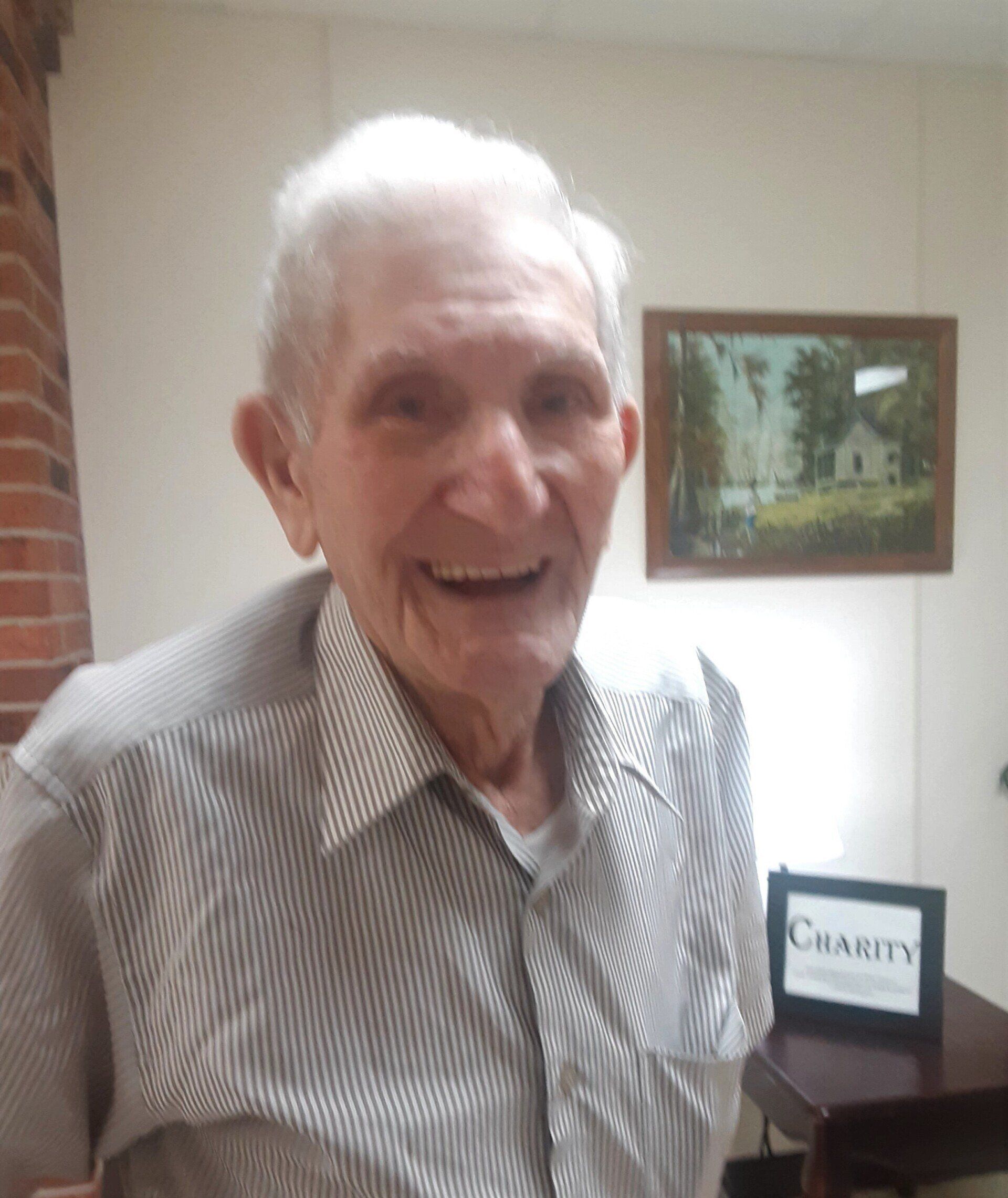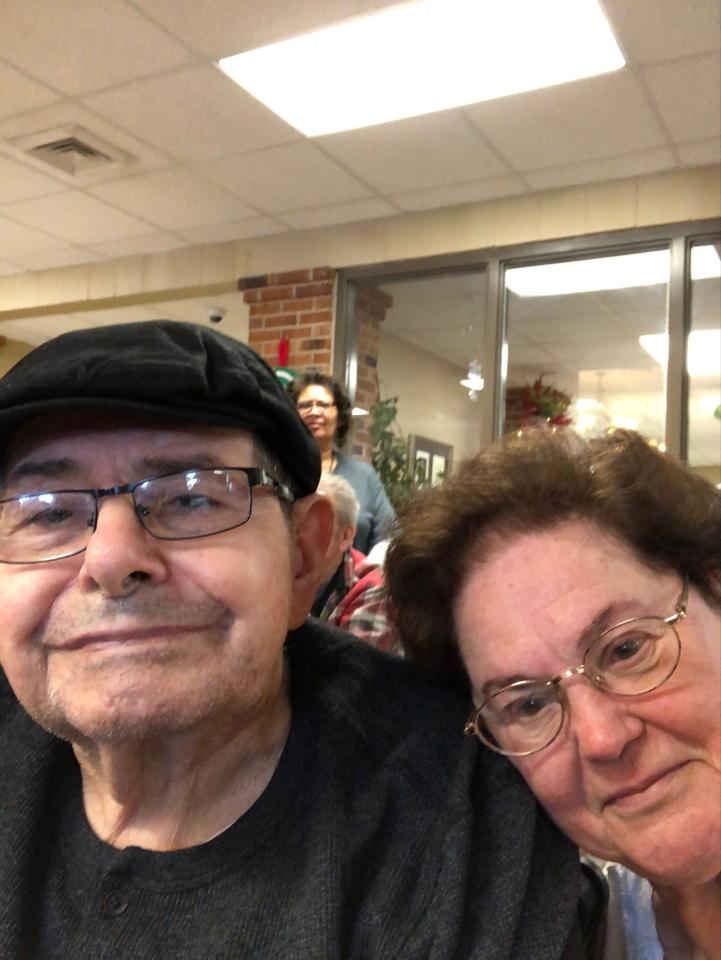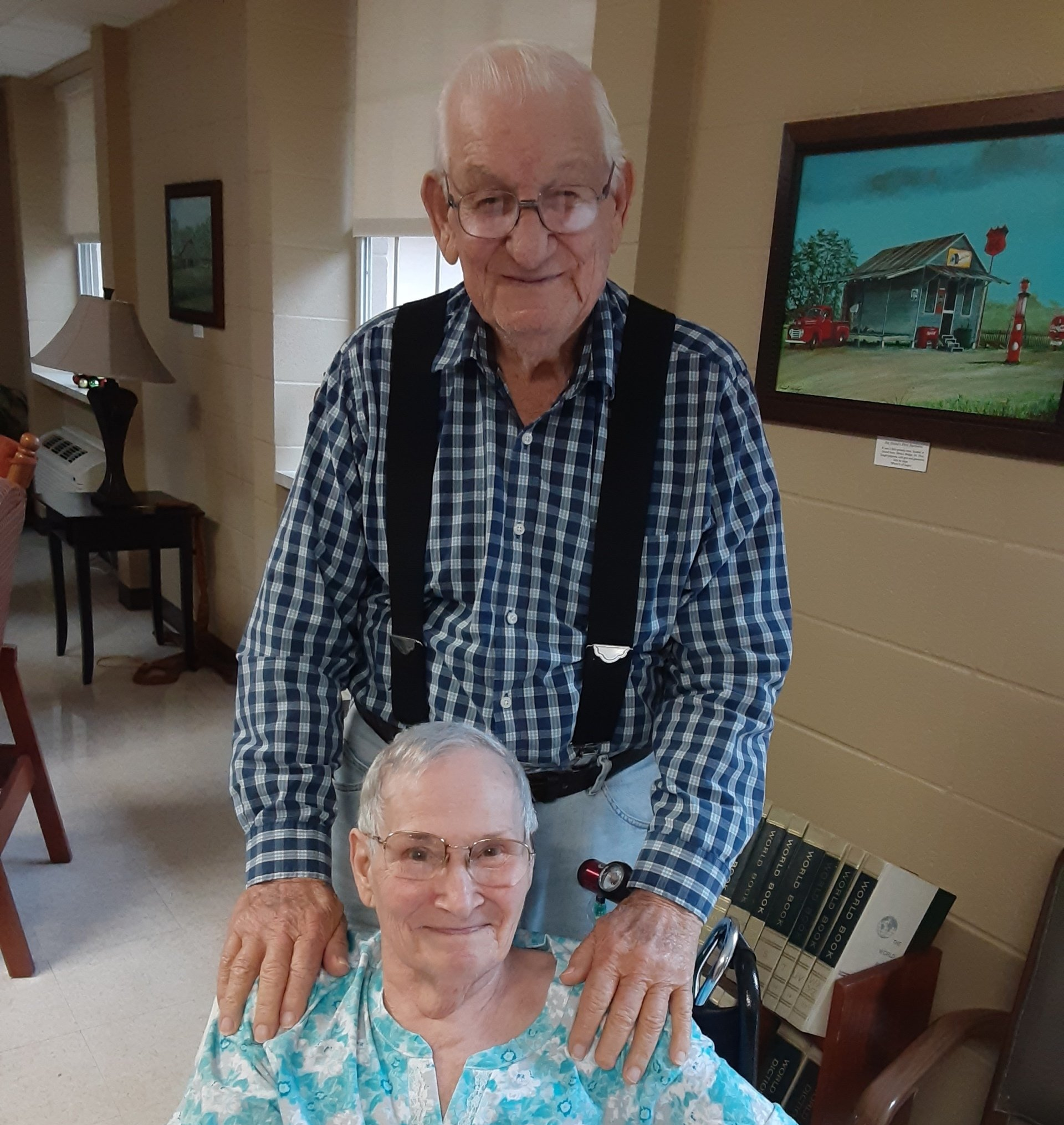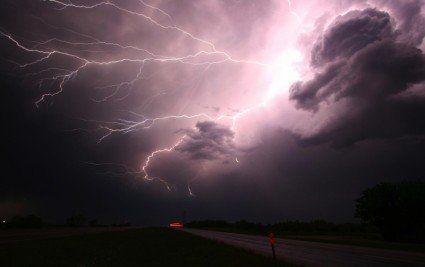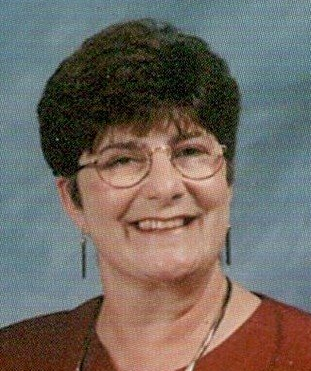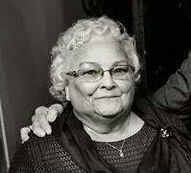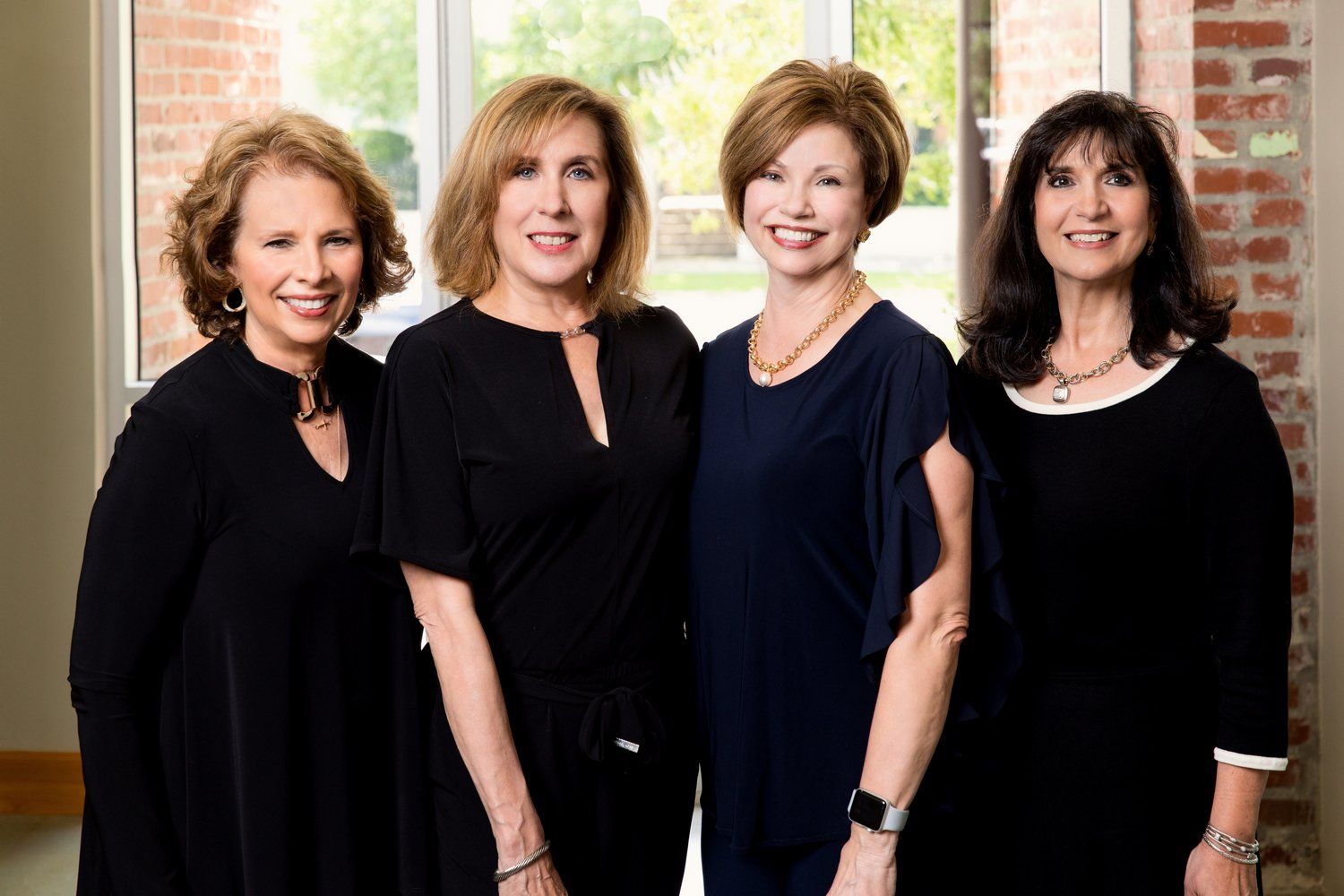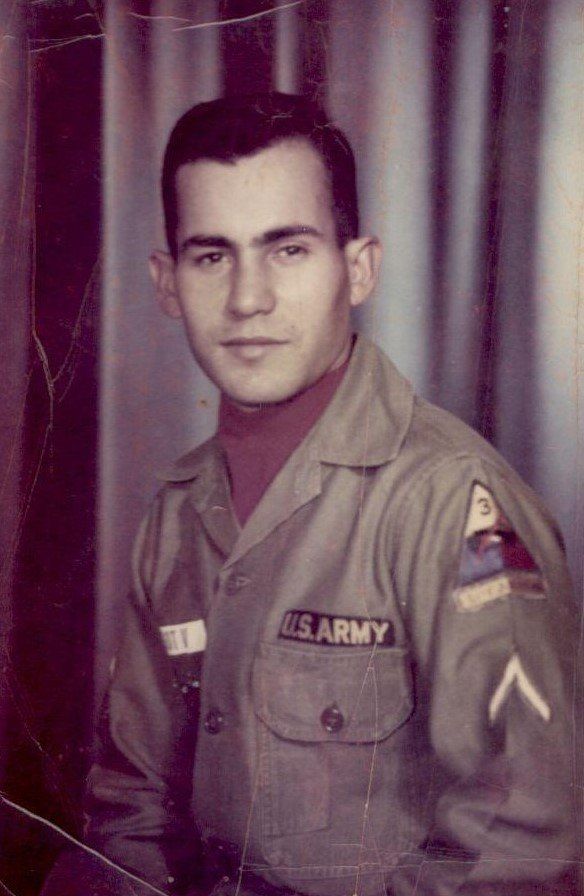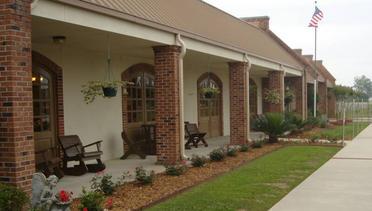Heda's Memories of a Stormy Night and more...
On our first writing day, I was happy to see Heda with her head down and writing as though she had lots to say. When I was leaving, she told me that her story had to do with an event that happened many years ago and she would like to have the exact date. I told her I would research a bit and I realized that I had a book called “One Hundred Years of the Upper Teche, Arnaudville, Louisiana, by Roger Baudier, Sr., K. S. G., Official Chronicler – Archdiocese of New Orleans.
The book is “The story of the origin and development of Arnaudville, the community, its Catholic church, its schools, its business establishments and its industries of the vicinity, compiled for the celebration of the Centennial of St. Francis Regis Church May, 1953 under the direction of its pastor, Rev. Daniel Bernard.” (page 1)
I brought the book to Heda and today, April 2, 2015, for the Apostleship of Prayer, Nonco Group, she returned the book, along with her hand-written story excerpted in part from the book. It follows:
“La Jonction,” meaning “the junction” is our little town which got its name by the meeting of the two bayous, the Teche and Bayou Fuselier. It is also where St. Landry and St. Martin parishes border. When Arnaudville was incorporated on February 17, 1870, La Jonction was given the name “Arnaudville,” a thriving community of the land of cotton, daughter of the Teche, center of rich farming area, central point for sugar cane, oil, yams, cotton, cattle, cabbage, corn, soy beans, hogs, chickens, fruits, vegetables, pecans, peanuts, figs, persimmon and grapes.
Farming has been the backbone of the community and brought about higher standards of living that are a far-cry from the days of long ago. Those were the days of Kush-Kush, pain mais, grits, salt meat, candlelight, cottonades and home-made furnishings in the unpainted “maison a bardeaux,” meaning house shingles.
In the 1950’s, farmers had butane gas and worked the fields with tractors. Homes had deep freezers, refrigerators, radios and fans, all of which came with rural electricity. Now, we also have rice and crawfish farms (and television and computers!).
In 1885, real estate agents said “the town of Arnaudville is in a splendid farming region with excellent citizens contributing to its trade. Here is also found a church and school house that speaks for the piety and intelligence of the people. In this section are found some of the most fertile lands of our parish. Land sells at $5 to $15 per acre according to location and improvements. “
Such has been the origin and development of the town of Arnaudville, center of a rich farming district that grew up around its first modest chapel started by the generous Arnaud family under the zealous direction of the Jesuit Fathers who did so much for St. Landry and St. Martin parishes and for all of Louisiana. Through their educational and missionary work, a town that has come to full stature around its now imposing house of worship, which was the center of the 1953 Centennial.
Nearby in the old cemetery lie many of the pioneers who helped to make Arnaudville and who worshipped at its historic church. They, as well as the pastors down over 160 years, who directed the spiritual destinies of the people of the Upper Teche are gratefully and reverently remembered, for together, pastors and people gave us Arnaudville and its thriving section of today. And, it was not always easy.
On December 22, 1916, the old rectory, the original parish chapel, caught fire and was destroyed.
The year 1917 saw America again at war. Flags blossomed out all through the Teche country, as loyal sons of Acadiens marched off willingly to defend the nation. Anxious parents came more faithfully and regularly to Church to pray for their safeguard and for peace.
Another tragic event was the great flood of 1927. Since that time, the government has built the levee system that we see at Henderson.
The Teche country was not exempt from bad influences and priests serving that area had much to undergo, many trials to suffer and much patience to practice. Their long-suffering and their perseverance built up the heritage of faith that we enjoy today. Not many realized the sacrifices and tedious labors of the Jesuit Fathers in the vast mission field that they tilled from the Atchafalaya down to the Gulf, arduous journeys on horseback, in buggies and in boats, to reach souls entrusted to their care, and to preserve for them their ancient Acadian faith.
La Jonction was part of that great mission field. I was fortunate in being the beneficiary of their courage, determination and zeal regardless of the dismal attitudes of the day. However, all the sacrifices and labors were not in vain. Acadian loyalty to the faith was preserved, perhaps better here than in many other areas. This was traced from 1837 – 1871, nearly 35 years. Many of these fathers gave up their lives in the line of duty during the yellow fever epidemic of 1867, wars, floods, fire which destroyed property and crops—Depression
My Papa, was Albert Hardy. His first wife was Lucy Lormand and together they had nine children: Moise, Rudolph, Rodney “So,” Ida, Sidney, Hilda (she was just 18 when she died), Enola (she went to live with an aunt in Texas and went to work), Lester (was in the military and became a druggist), and Edwin “Boon.” After Lucy passed away, Papa married my mother, Ezola Chautin, in 1936, and together they have four children: Heda, Elrick (he also died young), James and Margie. I don’t remember in what year but we moved to St. Martin Parish near Bayou Portage.
I do know that the older boys: Moise, Lester and Rodney were in the military. As raw land was cheap to buy, Moise and maybe the other boys who were in the military would send money to Papa for him to buy land. Papa was the overseer on the Singleton Plantation. Life was hard. It was the days when oxen were used to clear the land, hauling huge logs and in the sugarcane season, the ox were the beast of burden. I was born there in town on the Singleton farm; but, Papa and his older sons bought property in St. Martin Parish and eventually we moved near Bayou Portage. The youngest boy of Papa’s first marriage we called “Boon.” He still lived at home and he worked hard with Papa clearing the land and farming. Papa became sick and was brought to his son Rudolph’s home in town so that Papa could be closer to the doctor. In 1944, Papa passed away, leaving Mom with 4 young children.
After the war, Moise came home and his house was next to where we lived. Sidney had married Euzie and they had two children, Lucas and Mathilde, who we called “Mat.” After Sidney passed away, Euzie married Moise, her brother-in-law, and they had a daughter, Nancy.
Just before Easter, one tragic event that struck the community of Arnaudville was a tornado. At 1:40 a.m. on April 4, 1952, Father Bernard, the then pastor of St. Francis Regis Church remarked that when he arose before dawn, “we noticed that there were no lights in the rectory or the church. As I opened the front door, I was met by Sam Hardy, who had come to get me, and he related to me the great catastrophe. We raced across the fields, and as we went, we saw the havoc. Some 30 homes totally destroyed. We went to where lay the known dead: Alexis “Sirop” Olivier, his wife, Suzie, and 2 children, Shirley and Pearl. I anointed them all. Then, I went around among the terrified people, all dazed at the fate of the Olivier family.”
We lived by Moise and Euzie. They cared for us because Mom was sick. My Mom was always terrified of bad weather. But, God Almighty let her sleep until she noticed the house was shaking. Has we gotten out of the house, the flying depris would probably have hurt us badly or killed us.
The sky was lit up with lightning. Mom, my baby sister Margie and I were in one room. James and Elrick were in the other. Margie still slept in her high iron baby bed. Mom bent down to pick up Margie and at the same time the force of the wind blew our house off the blocks and the armoire fell on the iron baby bed. I slept in the double bed near the window. I had covered my eyes with my arm because the lightning was so intense; but, the wind blew out the window and the glass flew in my face. I was cut on my arm and chin and I was bleeding. The gas pipes were broken.
By then, the neighbors from all around were coming to help. They brought us to Euzie and Moise’s next door. Moise was walking around and did not realize that his house had separated in two. He fell down and cut his leg real bad. Euzie’s mama, Mrs. Mathilde Dugas, who was very old lived with them. The windows from the glass porch where she slept were also blown out. What saved her was the sheet rock that fell on top of her bed. She suffered only a broken arm. At day break they brought Mrs. Mathilde, Moise and I to the doctor in town.
Mr. Sennett was a man who lived on Moise’s property and helped on the farm. Their whole house was demolished with only the floor left. The wind blew one of his girls on a mattress across the fields. The mattress landed up in a tree. The girl was not hurt but she sure was lost for a while.
There is a nurse here called Selina who treats wounds. We got to talking and we figured out that she is a cousin to Mr. Sennett’s daughter who was blown on the mattress in that tornado. It’s a small world.
As Easter was approaching, “Mom Euz,” as we called Euzie, had made Mat and I each a voile dress. We were just at an age when we could start going to the dance and we were looking forward to this special occasion. We had our dresses hung on the closet not to wrinkle them. How we cried when we saw our dresses all full of mud!
We always had fresh chicken eggs to boil and dye for Easter. After all of the commotion of the tornado, there was sure a change of plans. We were thankful to have saved our lives.
I read in the book “One Hundred Years of the Upper Teche” that the funeral of the Oliviers brought out a crowd of nearly 3,000 to the new church. A lot of the men of the community had stopped going to church. They were faced with so many hardships. The priest was shocked for there were people from all over who came to the funeral because this was such a tragedy. When a buggy stopped at a farm house and Jean Baptiste was there all dressed up, you could hear: “Ga tu vas descender a l’egluise toi ausse?” “Tu sais, je va ecouter ca gui dit--ca fait penser, hein?” (Look, you will come to the church you too. You see, I want to hear what will be said—It makes you think, huh?)
A cross has gleamed over the tree tops where the waters of Bayou Fuselier connect with Bayou Teche. That cross has pointed heavenward on “La Maison du Bon Dieu,” (the House of God). All trails and roads and paths led to it because it marked for the Acadiens of old, for the prospering farmers of yesterday and for the citizens of today, the place where God abides, His home among the people.
Life moved on after that tornado. I married Frank Kidder and we had two children, Francine and Jude. We always loved to dye Easter eggs. Francine has two girls, Jennah who is in 8th grade and Hannah who is a dental assistant.
Religion plays a big role in our lives. Jude, and his wife Stephanie also have two children. Cameron is 14 and Miranda is 17. I am proud that they are Altar Servers. Who knows, they may become a priest or a nun someday.
My children and grandchildren loved my Black Pot Holiday Dinners when we sat around the table and enjoyed being together and the good food. The grandchildren also loved leaving with a “care package” to enjoy with the memories of happy times together.
Thank you, Heda!
We are grateful for Heda’s memories of that fateful Easter when a tornado brought destruction to Arnaudville and for including some of the information from the centennial book.
Some of the residents would like to write stories but have not written in years. And, some have never attended school. Please consider serving as a scribe and more memoirs will be captured. We share them here on the nursing home website and we give a copy to the contributor. If you want to join me, just give me a call. You will enjoy these wonderful people! 337-523-5832.
Around Our Home Away From Home, Our Stories
